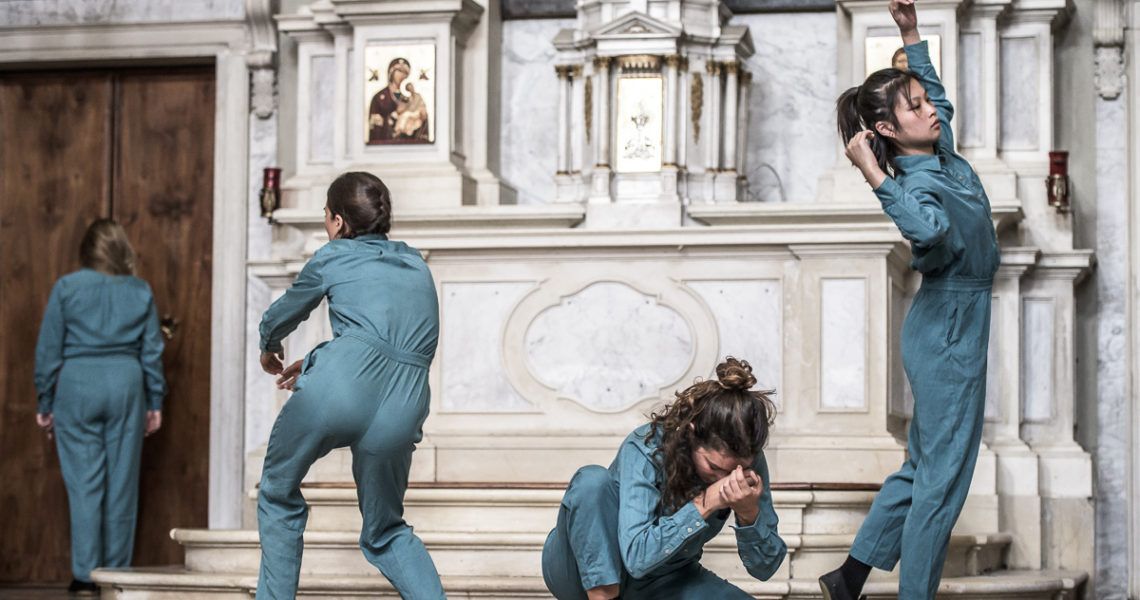
German Nigerian, London-based choreographer Patricia Okenwa is working with second-year students on new work to be performed as part of NEW GROUND (27th- 30th November).
Founding member of New Movement Collective (NMC), a visionary collective of choreographers, Patricia began her training at Rambert School before continuing her studies at John Neumeier School of the Hamburg Ballet in Germany. Patricia returned to the UK as a company dancer with Rambert for 12 years and as a choreographer, and in 2016 created ‘Hydrargyrum’ for the company repertoire and tour.
Recent choreographic commissions include ‘Stabat Mater’ for B-Motion Festival, Italy; ‘glitch…this site is currently under construction’ for Renaud Wiser Company; ‘touch each feel other’ for Edge Dance Company; ‘Scenes from Daphnis and Chloe’ for MusicArt London; and ‘Ride’ for BBC Young Dancer winner Connor Scott’s grand final performance in 2015.
Exploring the possibilities of performance and digital art, Patricia Okenwa has also collaborated on a VR experience named ‘Camouflage’ with Maria Júdová and Andrej Boleslavsky.
Ahead of NEW GROUND, we spoke to Patricia to find out about the commission and her experience working with NSCD students so far:
Q. How would you describe your practice as a whole?
A. Movement based on improvisation and movement research, collaborative, visceral, emotional.
Q. Can you tell us what you are currently working on with the students? Are there any ideas or themes in particular that you are dealing with?
A. Themes I am interested in exploring with the students are ‘making the work visible’ and ‘community and collaboration’. I have been focussing on using the energy that goes into work/effort as main material/texture of the work; labouring, effort, recovery are part of any movement I am interested in. I believe it is impossible to appreciate, remunerate and celebrate work when it is covered up in seemingly effortless and perfect production.
Q. Do you have any collaborators working with you on the creation of the work?
A. In this process the dancers are my collaborators. They devised material and reflected on the process. They also worked as a team to support each other and build on individual strengths. My long-time collaborator Geoff Holroyde has advised me with music choices.
Q. How have you found the process of developing new work with our students so far?
A. Trust and risk are important to me, I thrive when dancers are open to experiment and not too worried too early about the outcome. In my collaborative creative process, I start with improvisation and develop through it, honing in on particular qualities that form the material basis I build the piece on. I manipulate, push, layer, and redefine until I find texture, quality or colour. With influence of music and evaluating the dramaturgic potential of the material, a composition emerges. At all times we will continue to be in dialogue with each other, building trust between us, in order to take on the responsibility of our roles as creators.
This process continues throughout the creative process until the work is on stage, at which point the dancers are equipped to continue questioning the material.
Q. What can audiences expect to see?
A. Detailed, challenging movement that demands full commitment from the dancers. A sense of wanting to join together as a pack of individuals and the complex effort needed to achieve this. A journey through a range of textures from spacious to dense, fierce to gentle.
Witness the next generation of dancers and choreographers across four nights in NEW GROUND, Tuesday 27th – Friday 30th November at Riley Theatre.
Book Tickets